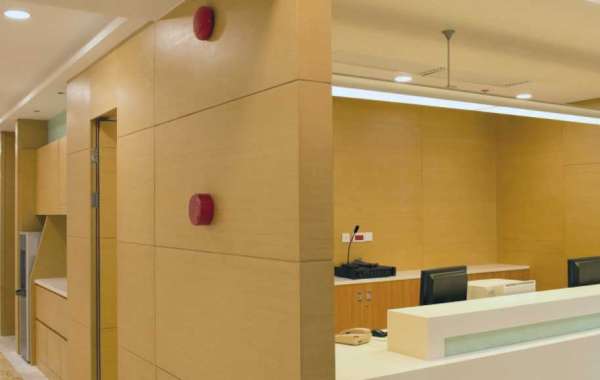The journey from baby teeth to adult teeth is a fascinating process that underscores the intricate design of the human body. This transition, often marked by a significant change in dental appearance and function, is deeply influenced by the roots of the teeth. Understanding the role and function of roots in your child's dental development can shed light on the complexities of this natural progression and the importance of maintaining dental health throughout childhood.
The Basics of Dental Development
Human dentition undergoes two primary phases: the primary (baby) teeth stage and the permanent (adult) teeth stage. The primary teeth, which begin to emerge around six months of age, play crucial roles in a child's early development. They not only help with chewing but also aid in speech development and guide the proper alignment of the adult teeth that will eventually replace them.
By the age of about six, children begin to lose their primary teeth, making way for the eruption of permanent teeth. This transitional phase, known as mixed dentition, typically lasts until around age 12 or 13, when most of the adult teeth have fully emerged.
The Anatomy of Teeth
To fully appreciate the role of roots in dental development, it's essential to understand tooth anatomy. Each tooth consists of several key parts:
Crown: The visible part of the tooth above the gum line.
Enamel: The hard, protective outer layer of the tooth.
Dentin: The layer beneath the enamel that forms the bulk of the tooth.
Pulp: The innermost part of the tooth containing nerves and blood vessels.
Root: The portion of the tooth embedded in the jawbone, anchoring the tooth in place.
The root is covered by a substance called cementum and is surrounded by the periodontal ligament, which helps attach the tooth to the bone.
The Role of Roots in Baby Teeth
In the context of baby teeth, roots play several crucial roles:
Anchorage:
The roots of primary baby teeth have roots anchor them securely in the jawbone, allowing them to function effectively for chewing and speaking. They provide stability and support during the early years of a child's life.
Guidance for Adult Teeth:
The roots of primary teeth help guide the eruption of permanent teeth. As primary teeth begin to loosen and eventually fall out, the underlying permanent teeth push through the gums. The roots of primary teeth gradually dissolve through a process called resorption, creating space for the new teeth.
Spacing and Alignment:
The presence of primary teeth helps maintain the proper spacing and alignment of the developing permanent teeth. The loss of these teeth at appropriate times is crucial for ensuring that adult teeth erupt in the correct positions.
The Transition to Permanent Teeth
The transition from primary to permanent teeth is a complex process involving several stages:
Root Resorption:
As a primary tooth begins to loosen, the roots undergo resorption. This process involves the gradual dissolution of the root structure, which is essential for the tooth to fall out naturally and make way for the permanent tooth.
Eruption of Permanent Teeth:
Once the primary tooth's roots have been resorbed sufficiently, the permanent tooth begins to emerge. The roots of the permanent teeth are initially short but gradually lengthen as the tooth establishes itself in the mouth.
Root Formation and Maturation:
The roots of permanent teeth continue to develop and mature after eruption. This process, known as root formation, can take several years to complete. Fully developed roots provide the necessary strength and stability for the adult teeth.
Common Issues in Root Development
Several issues can impact the development and health of dental roots during childhood:
Early Loss of Primary Teeth:
If primary teeth are lost prematurely due to decay or trauma, it can affect the alignment and spacing of permanent teeth. This can lead to orthodontic issues and misalignment.
Delayed Eruption:
Sometimes, permanent teeth may fail to erupt on time, which can cause alignment problems and impact the function of the bite. This can be related to issues with root development or other underlying conditions.
Dental Trauma:
Injuries to the teeth, especially the primary teeth, can affect the development of permanent teeth. Trauma can cause damage to the roots and impact the eruption and alignment of adult teeth.
Genetic Factors:
Genetic factors can also play a role in dental development. Conditions such as hypodontia (missing teeth) or hyperdontia (extra teeth) can impact the number and formation of roots, leading to various dental issues.
The Importance of Dental Care
Maintaining good dental health throughout childhood is essential for ensuring proper root development and overall dental health. Here are some tips for parents to help support their child's dental development:
Regular Dental Check-ups:
Regular visits to the dentist can help monitor the development of teeth and roots, address any issues early, and ensure that primary and permanent teeth are coming in correctly.
Good Oral Hygiene:
Encouraging good oral hygiene practices, such as brushing and flossing, helps prevent decay and other issues that can affect the roots and overall health of the teeth.
Balanced Diet:
A balanced diet rich in essential nutrients supports healthy teeth and gums. Foods high in calcium and vitamin D are particularly important for strong teeth and bone development.
Protective Measures:
Using protective gear during sports and other activities can help prevent dental injuries that might impact the roots and overall dental health.
Conclusion
The transition from baby teeth to adult teeth is a remarkable process that highlights the importance of dental roots in a child's development. Roots play a vital role in anchoring teeth, guiding the eruption of permanent teeth, and ensuring proper alignment and function. By understanding this process and taking proactive steps to maintain dental health, parents can support their child's dental development and help ensure a lifetime of healthy smiles.













